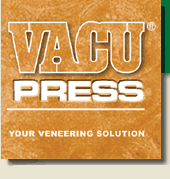DavidG

Posts: 2
Joined: 2010-05-20
Location: Portland, OR
 User Profile User Profile |
I'm wondering about a project I've got coming up. I am re-veneering the accent pieces on the dashboard of a vintage Mercedes. I've done a bit of veneering over the years. Flat or simple curves. The part of this project that I'm thinking about is the horizontal accent strip that goes across the full width of the dash. For most of that run, it's simply a 2" wide band, slightly ovalized. The troublesome bit is at either end, where that ovalized band also curves around the ends of the dash, and toward the front of the car. This creates a compound curve.
I'll be veneering in a burl.
I can imagine creating - by trial and error - a taped piece of veneer which will then lay down and fill most of the space, then infilling as necessary with slivers of the burled veneer.
I do not have a vacuum setup, but am sorta, halfway looking for an excuse to buy one. OTOH, it seems that I could also use the existing substrate, along with a fabricated female mold-half (probably made with bondo or filled epoxy, with the shape pulled off the existing trim pieces) along with mechanical clamping pressure to squeeze the mold-halves together
So - two issues:
First, can anyone advise me about a nifty way to create the veneer skin to lay down on this compound curved piece, leaving a minimum of voids or overlaps? Remember... it's a burl, so I have a little fudge-room when it comes to not having to line up a linear grain pattern.
Second, is this my excuse to buy a vacuum system, or can I readily accomplish the job with clamps?
Anyone who's done such a project, or who has more veneering experience than I & has thought it all the way through... I'd welcome your thoughts.
Perhaps this topic has been covered here before. IF so, perhaps someone could direct me to the thread?
Thanks!
|





